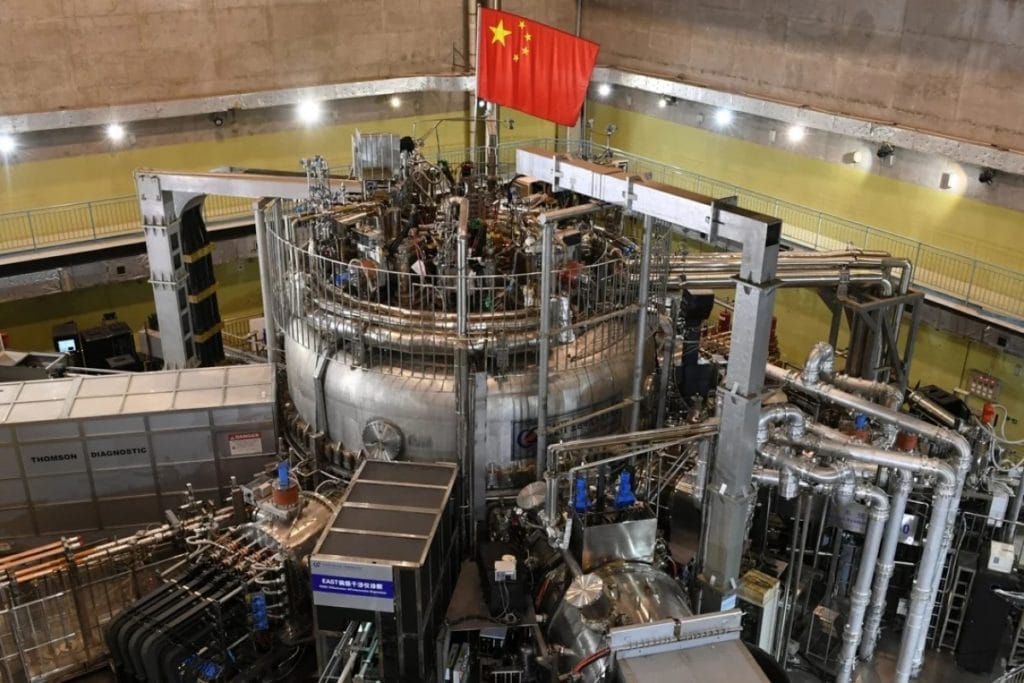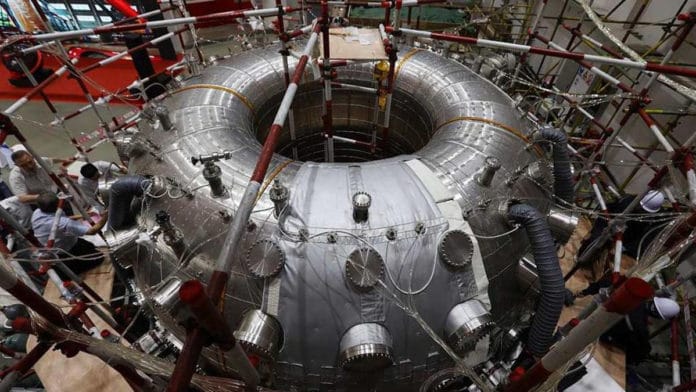China’s next-generation “artificial sun” – the International Thermonuclear Experimental Reactor (ITER) project, HL-2M Tokamak – will be commissioned in 2020. The corresponding statement was made at the National Thermonuclear Energy Conference in Leshan, Sichuan Province, by the head of the Southwest Institute of Physics at the Chinese National Nuclear Industry Corporation, Duan Xuzhu.
Inside the toroid, confined, it is expected to reach a temperature of 200 million degrees Celsius, forming the so-called plasma. The project, which cost almost a billion dollars, was coordinated by SWIP (Southwestern Institute of Physics), under the direct control of the CNNC (China National Nuclear Corporation).
The HL-2M reactor is the upgrade of the previous model, called HL-2A. And, at the moment, it is one of the three existing thermonuclear fusion reactors in China. The tests have been completed, and the Chinese government is ready to inaugurate this “artificial sun.”
The HL-2M weighs 450 tonnes and is built from Polodial field coil systems. It uses a doughnut-shaped chamber known as tokamak to study how to produce and contain the fusion power. Electric currents of up to 3 million amps will flow through a 90-tonne copper coil to generate a powerful magnetic field that in turn “contains” the plasma produced by the fusion process and prevents it from causing the facility to go into meltdown. The coil developed for the HL-2M is among the facility’s key achievements as it has shown immense ability to withstand shocks.

In June, installation work took place; it was reported that the construction would be completed this year. The device is designed to reproduce the natural reactions occurring on the Sun, using hydrogen and deuterium gases as fuel. It aims to provide clean energy through controlled nuclear fusion.
As the scientist noted, this “artificial sun” will provide important technical support for China’s participation in the project of an international experimental fusion reactor, as well as for independent design and construction of fusion reactors in China.
So far, the most confident steps towards artificial thermonuclear fusion are shown by the international scientific community. Perhaps a breakthrough will be the launch of ITER from 2023 to 2025.
On the other hand, China has always invested in fusion technology since the 1960s. More recent is the direct participation in the ITER project. Together with the European Union, the United States, India, Japan, South Korea, and Russia.
